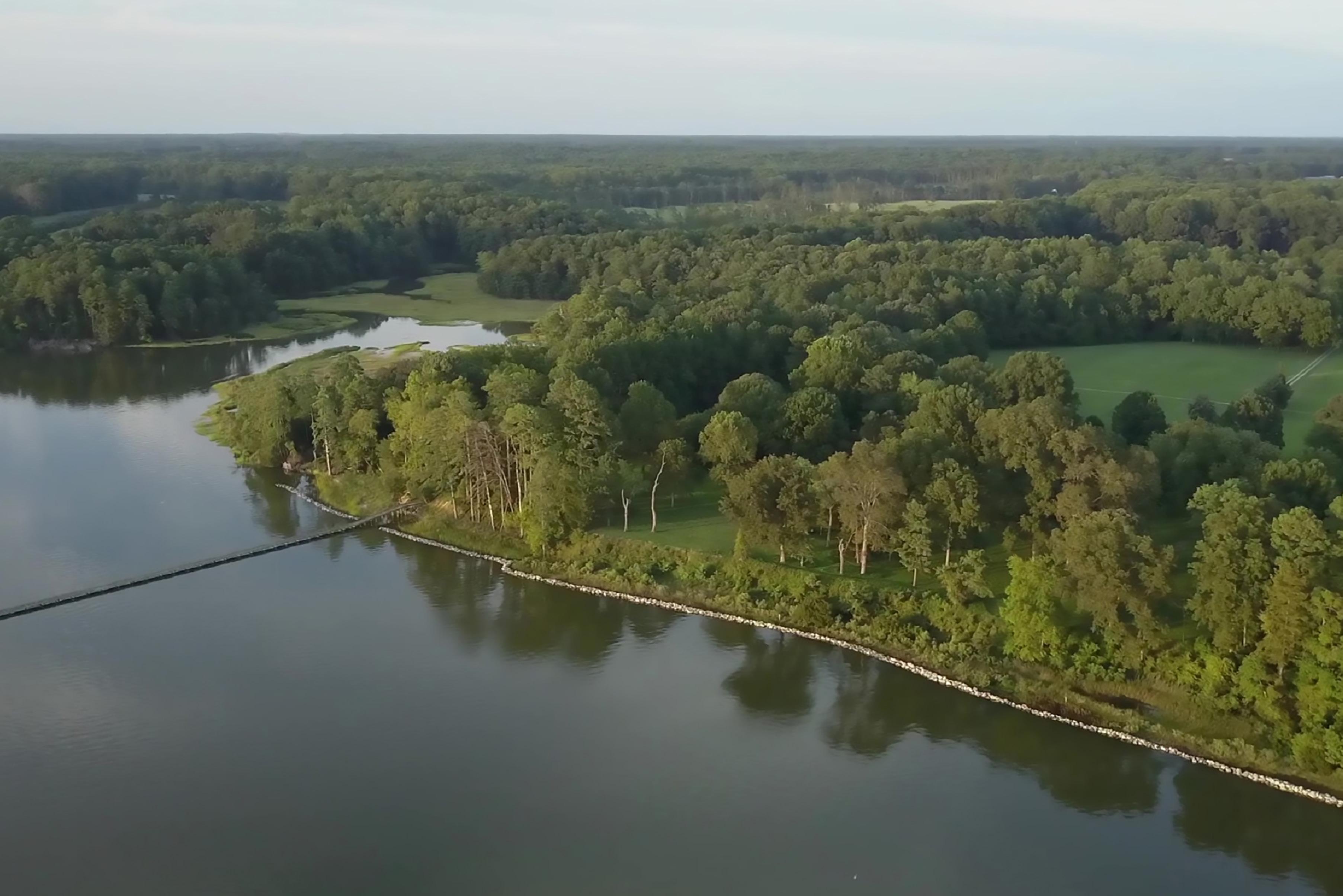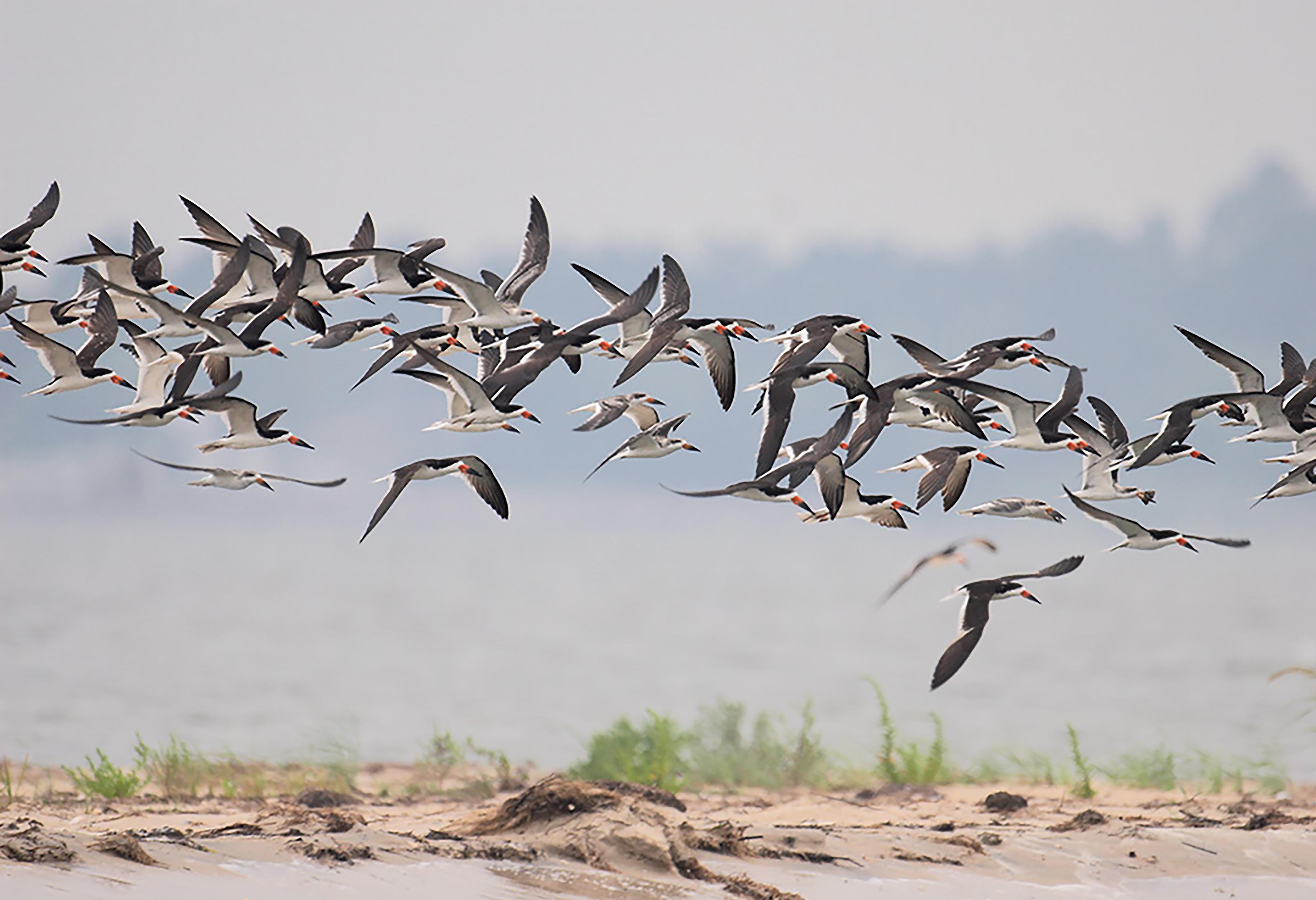BILINGUAL RANGERS IN MARYLAND PARKS
SANDY POINT NATURE CENTER
JESUIT PROPERTIES CONSERVATION
MARYLAND’S HABITAT CONNECTIVITY NETWORK
PROTECTION OF EAST MARLTON FOREST
PASSAGE OF MARYLAND’S WHOLE WATERSHED ACT
EXPANSION OF MOULTON PARK IN WEST VIRGINIA
EXPANSION OF RAPPAHANNOCK RIVER VALLEY NATIONAL WILDLIFE REFUGE
CHESAPEAKE BAY INTERPRETIVE BUOY SYSTEM
CHESAPEAKE CONSERVATION PARTNERSHIP
VIRTUAL RIVER TOURS WITH TERRAIN360
WATERMEN’S HERITAGE TOURS
DESIGNATION OF MASONVILLE COVE AS NATION’S FIRST URBAN WILDLIFE REFUGE PARTNERSHIP
WILDLIFE WEBCAMS WITH EXPLORE.ORG
CHESAPEAKE ROVING RANGER WITH CHESAPEAKE GATEWAYS
EXPANSION OF QUIET WATERS PARK
NANTICOKE CROSSING PARK
FIRST MAP OF GROUND-MOUNTED SOLAR ARRAYS
EARL CONSERVATION CENTER
OYSTER HOUSE PARK
CHESAPEAKE CONSERVANCY
15 PARTNERSHIP ACHIEVEMENTS IN 15 YEARS
For 15 years, Chesapeake Conservancy has served as the only watershed-wide organization focused on both land conservation and stream restoration to achieve a healthier Chesapeake Bay. Our mission— to conserve and restore the natural and cultural resources of the Chesapeake Bay watershed for the enjoyment, education and inspiration of this and future generations —has always been grounded in collaboration.
This photo book, Chesapeake Conservancy: 15 Partnership Achievements in 15 Years, celebrates the incredible collective impact of our partnerships. Together with donors, community leaders, conservation organizations and government agencies, we have safeguarded critical landscapes, restored vibrant ecosystems and empowered communities across the watershed.
Guided by the ambitious goal of protecting 30% of the Chesapeake watershed by 2030, our success proves that united efforts can overcome the challenges threatening this extraordinary region. Every acre conserved and every mile of waterway restored reflects the dedication of those who share our vision of a thriving Chesapeake Bay.
Thank you for being part of this journey and for joining us in the important work ahead. Together, we can ensure the Chesapeake Bay and its tributaries remain a symbol of resilience, connection and hope.
1
Establishment of the Captain John Smith Chesapeake National Historic Trail
From our founding, Chesapeake Conservancy has supported the National Park Service’s Captain John Smith Chesapeake National Historic Trail, advancing land conservation and recreational access. Established in 2006, the trail commemorates Smith’s exploration of the Bay from 1607 through 1609 and the Indigenous people who have lived in the region for over 10,000 years.
Designation of Fort Monroe
National Monument
Fort Monroe in Virginia, is a historic fort and the landing site of the first enslaved African people brought to these shores. Chesapeake Conservancy advocated for its national monument designation, participated in the master planning process, and called for its inclusion as one of four sites in the Chesapeake National Recreation Area legislation.
FORT MONROE
Creation of Harriet Tubman Underground Railroad National Historical Park and National Monument
As a member of a coalition of partners, Chesapeake Conservancy garnered support for the Harriet Tubman National Monument, designated by President Barrack Obama in 2013. The site then became part of the new Harriet Tubman Underground Railroad National Historical Park in 2014, following The Conservation Fund’s generous donation of 480 acres.
Conservation of Werowocomoco
Werowocomoco, along Virginia’s York River, was a significant Powhatan Indian town for centuries before English settlers established Jamestown. Chesapeake Conservancy helped secure funding for its permanent protection by the National Park Service through the Rivers of the Chesapeake, a collaborative landscape initiative funded by the Land and Water Conservation Fund (LWCF).
Designation of Mallows Bay
– Potomac River National Marine Sanctuary
Mallows Bay is home to the “Ghost Fleet,” hundreds of shipwrecks from World War I and the Revolutionary War that are largely submerged during high tide and slowly revealed during low tide. Today, the wrecks support diverse marine ecosystems. Chesapeake Conservancy was a lead partner in the effort to designate the Bay’s first national marine sanctuary.
DONALD SHOMETTE
Large landscape conservation in the Nanticoke River watershed totaling more than 3,450 acres
Often called the “Everglades of the North,” the Nanticoke watershed is threatened by the encroachment of development, sea level rise, habitat degradation and fragmentation. Through a patchwork of support, Chesapeake Conservancy and our partners have protected 25 properties totaling 3,458 acres in the Nanticoke watershed, creating a network of protected lands in excess of 19,300 acres.
PHOTO BY WILL PARSON, CHESAPEAKE BAY PROGRAM
Expansion of Blackwater National Wildlife Refuge
Since our founding, Chesapeake Conservancy has been a strong advocate for the expansion of Blackwater National Wildlife Refuge, helping to secure millions in funding and partnering to add hundreds of acres. Located 12 miles south of Cambridge, Maryland, the refuge is an important resting and feeding area for migrating and wintering waterfowl.
Expansion of George Washington and Jefferson National Forests
The USDA Forest Service, the Open Space Institute and Chesapeake Conservancy partnered to conserve a 4,664.5-acre property in Botetourt County, Virginia and expand George Washington and Jefferson National Forests. The property is one of Virginia’s largest tracts to be acquired for conservation purposes in decades.
Returning Ancestral Homeland to the Rappahannock Tribe
In 2022, the Rappahannock Tribe in Virginia re-acquired 465 acres at Fones Cliffs, a sacred site to the Tribe located on the eastern side of the Rappahannock River and restored its original name of Pissacoack. This was made possible by a donation to Chesapeake Conservancy by the family of the late William Dodge Angle, M.D.
JEFF ALLENBY
Creating Elktonia-Carr’s Beach
Heritage Park
After years of advocacy and fundraising, in 2022, the City of Annapolis, Blacks of the Chesapeake Foundation, Chesapeake Conservancy and the state of Maryland entered into an agreement with The Conservation Fund to conserve the historically Black beach known as Elktonia. Today, Elktonia-Carr’s Beach Heritage Park is a public waterfront park in Annapolis commemorating Black history.
MARYLAND STATE ARCHIVES
Designation of Southern Maryland Woodlands National Wildlife Refuge
Chesapeake Conservancy is a core member of the coalition of partners that advocated for the establishment of an expanded National Wildlife Refuge System presence in southern Maryland. Approved at the end of 2024, Southern Maryland Woodlands National Wildlife Refuge is the first wildlife refuge established in the Chesapeake Bay watershed in more than 25 years.
MARVINANN PATTERSON
Advancing Designation of Chesapeake National Recreation Area
Chesapeake Conservancy has been a lead partner in the effort to establish the Chesapeake National Recreation Area (CNRA), a four-decade effort to bring National Park Service status to the Chesapeake Bay. Establishing the CNRA would expand resources for environmental protection and makes it clear that the United States cherishes the Chesapeake, the birthplace of American identity.
ANNE DELANO WEATHERSBY, PLAY BACK SHOTS
Delisting Streams in Pennsylvania from the Impaired Waters List
In April 2024, partners gathered to celebrate two segments of Turtle Creek in Union County, Pennsylvania, that were delisted from the federal Clean Water Act impaired waters list following 13 years of a partnership effort led by the Northcentral Stream Partnership. Turtle Creek is a prime example of how strategic investments have restored local streams.
Opening 248 New Public Access Sites
We believe that when people feel connected to the Chesapeake Bay, they’ll be more likely to be inspired to help take care of this national treasure. Since our founding, Chesapeake Conservancy has been a lead advocate for the National Park Service Chesapeake Gateways, which provides grants to create public access.
Using Artificial Intelligence and Groundbreaking High-Resolution Data to Empower Precision Conservation
Chesapeake Conservancy’s Conservation Innovation Center serves as a catalyst for change, leveraging cutting-edge geospatial data science, artificial intelligence and advanced analytics to tackle pressing environmental and conservation challenges in the Chesapeake Bay watershed. Our goal is to transform data into precise and actionable insights that restore and sustain the Bay’s health for current and future generations.

















